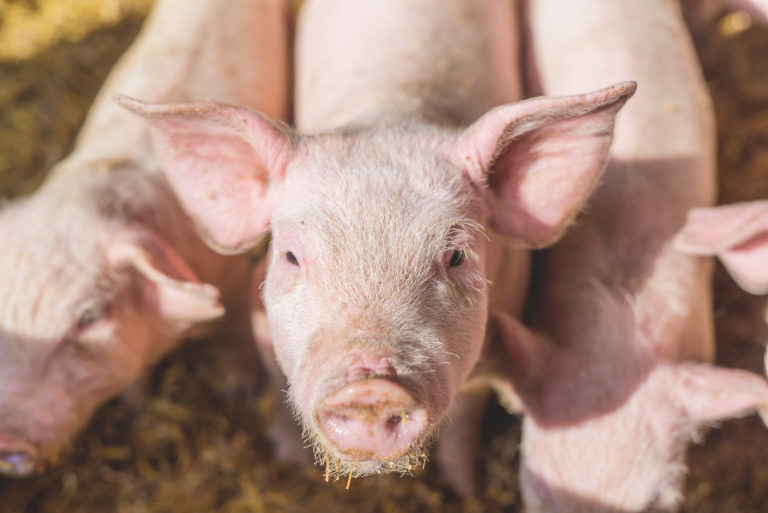Court Allows Slaughterhouse Pollution Lawsuit to Move Forward
By: Waterkeeper Alliance

The U.S. Court of Appeals for the 4th Circuit ruled on Wednesday that a lawsuit can proceed challenging the Environmental Protection Agency’s failure to update national standards to control water pollution from slaughterhouses.
Wednesday’s decision, in a lawsuit filed by community and conservation groups late last year, deferred for later consideration an argument by the government that the court does not have jurisdiction to rule on the case. The order will allow the court to decide whether the EPA violated the Clean Water Act by allowing thousands of meat- and poultry-processing plants to continue using outdated, insufficient pollution-control technology.
“Alarmingly, as Trump seeks to strip slaughterhouse workers of their legal rights just to protect the owners of massive corporate slaughterhouses, shamefully weak pollution standards also effectively shield those same bigwigs from liability for the harm they cause waterways and downstream communities,” said Peter Lehner, managing attorney for Sustainable Food & Farming at Earthjustice. “Simply put, this is wrong.”
The appeals’ court decision allowing the case to move forward comes as COVID-19 outbreaks have sickened about 5,000 slaughterhouse workers, killing almost 20. Widespread outbreaks also have closed some of the largest slaughterhouses across the nation. As a result, producers have begun killing millions of chickens and hogs, raising additional concerns about water pollution from the disposal of animal carcasses, which often contain pharmaceutical drugs and other toxins.
More than 8 billion chickens, 100 million pigs, and 30 million cattle are killed and processed each year in more than 5,000 slaughterhouses across the country. An estimated 4,700 of these slaughterhouses discharge polluted water to waterways across the country, including the Chesapeake Bay, either directly or indirectly through municipal sewage-treatment plants.
“We filed this lawsuit because it was clear that, due to outdated regulations, these corporate slaughterhouses would not clean up the waste they continue to dump into local rivers and streams on their own,” said Sylvia Lam, an attorney at the Environmental Integrity Project. “Trump’s EPA tried to keep us from having our day in court, and we’re eager to continue our fight against this administration’s efforts to once again prioritize corporations over people.”
In an October 2018 report, the Environmental Integrity Project found the average slaughterhouse discharged over 330 pounds of nitrogen per day in 2017 — an amount of pollution equivalent to that in untreated sewage from a town of 14,000 people. About two-thirds of the 98 slaughterhouses studied for the report discharge into waterways that are impaired by one or more pollutants found in slaughterhouse wastewater.
Meat-processing plants discharge water contaminated with blood, oil, grease, and fats. This wastewater contains nitrogen and phosphorus pollution, pathogens, and other contaminants. When released into waterways, pollution from slaughterhouses can cause algae blooms that suffocate aquatic life and turn waterways into bacteria-laden public health hazards.
Updated pollution standards could lead to significant improvements in waterways across the country, especially in areas where slaughterhouses are concentrated. The most technologically advanced slaughterhouses already release far less pollution than the dirtiest plants, proving that improved technology exists. Under the Clean Water Act, the EPA must ensure that all slaughterhouses adopt up-to-date and effective technology.
The court’s ruling comes in the wake of Trump’s executive order on Tuesday that slaughterhouses are to remain open as “critical infrastructure” despite controversy over the more than a dozen slaughterhouses forced to close across the country because of COVID-19 outbreaks and worker safety concerns.
“We can produce food without harming people and polluting waterways—in fact, the law already requires it. But time and time again, the government prioritizes corporate profits over the protection of farmers, farmworkers, and the public,” said Kelly Hunter Foster, senior attorney at Waterkeeper Alliance. “That the administration is putting slaughterhouse employees, their families, and surrounding communities in harm’s way during this crisis is atrocious, but is sadly not inconsistent with their past actions. EPA’s refusal to control discharges of dangerous pollution from corporate slaughterhouses has put those same communities at risk for years.”
“It’s not surprising that an administration that’s willing to put slaughterhouse workers in harm’s way is uninterested in making sure these plants aren’t polluting the environment,” said Hannah Connor, an attorney at the Center for Biological Diversity. “It is essential that pollution from these slaughter plants be reduced, not ignored, and increased as this administration’s policies have time and again supported.”
The lawsuit was filed in December 2019 by Environmental Integrity Project and Earthjustice on behalf of Cape Fear River Watch, Rural Empowerment Association for Community Help, Waterkeepers Chesapeake, Animal Legal Defense Fund, Center for Biological Diversity, Comite Civico del Valle, Environment America, Food & Water Watch, The Humane Society of the United States and Waterkeeper Alliance.
“The recent executive order re-opening slaughterhouses is just a bailout for an industry that is crying wolf about food shortages while ramping up exports,” said Kemp Burdette, Cape Fear Riverkeeper. “The Trump EPA’s refusal to conduct mandated updates to the regulations for the pollution that slaughterhouses dump into our waterways is just another example of this administration’s shameful push to prioritize producer profits over the health and safety of everyday Americans. We can do a much better job at cleaning up slaughterhouse discharge and thereby cleaning up our waterways – we just need the EPA to do its job.”
Feature image by Dusan Petkovic/Shutterstock.com